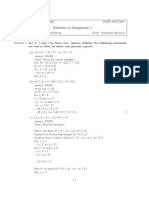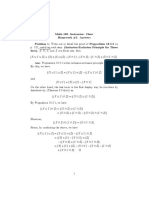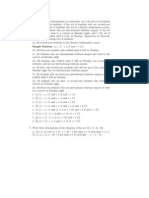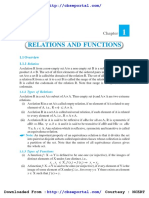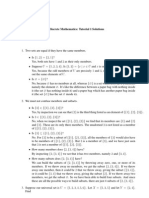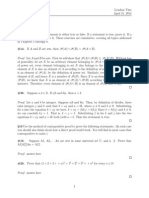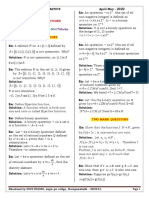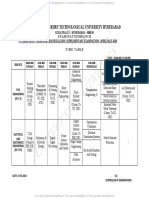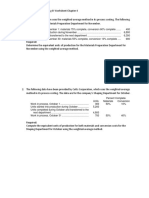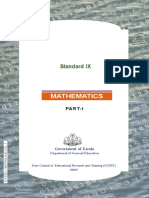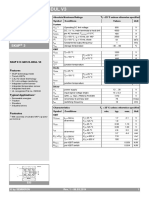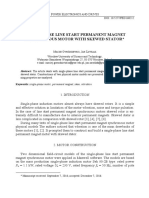0% found this document useful (0 votes)
20 views8 pagesDiscrete Structure
This document is an assignment for a Discrete Structure course at the Federal Urdu University, detailing various mathematical problems and proofs. It covers topics such as set cardinality, binary relations, logical proofs, function properties, and mathematical induction. The assignment includes specific problems with solutions related to these concepts, demonstrating the student's understanding of discrete mathematics.
Uploaded by
waniasaleem12Copyright
© © All Rights Reserved
We take content rights seriously. If you suspect this is your content, claim it here.
Available Formats
Download as PDF, TXT or read online on Scribd
0% found this document useful (0 votes)
20 views8 pagesDiscrete Structure
This document is an assignment for a Discrete Structure course at the Federal Urdu University, detailing various mathematical problems and proofs. It covers topics such as set cardinality, binary relations, logical proofs, function properties, and mathematical induction. The assignment includes specific problems with solutions related to these concepts, demonstrating the student's understanding of discrete mathematics.
Uploaded by
waniasaleem12Copyright
© © All Rights Reserved
We take content rights seriously. If you suspect this is your content, claim it here.
Available Formats
Download as PDF, TXT or read online on Scribd
/ 8



